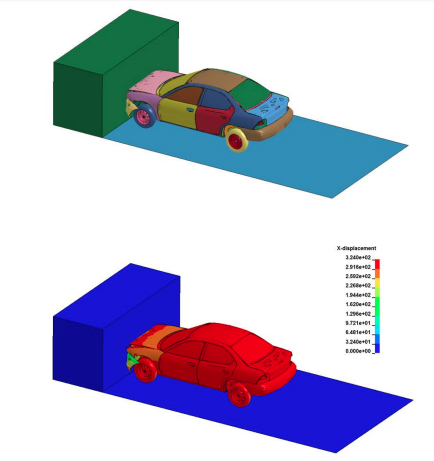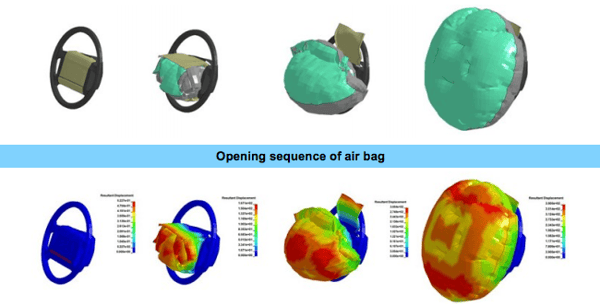On December 1, 1913, Henry Ford installed the first moving assembly line. The invention enabled mass production and reduced the time required to build an automobile from about 12 hours to only 2.5 hours. Since then, the automotive industry often led the way in technological innovation.
Today the continued push for greater fuel efficiency and the evolution of self-driving cars are propelling the automotive industry to adopt and adapt to disruptive technologies. Meanwhile automobiles are increasingly reliant on complex electrical systems to augment and enhance mechanical machines.
That increased complexity means that the conventional siloed approach to engineering simulations are no longer appropriate--yet more than 85% of computer-aided engineering (CAE) conducted by automotive companies is still single-physics simulation, according to ANSYS. That is, these simulations examine only one physical item in isolation, not as part of a system, as they actually operate. This approach has three primary limitations:
-
Undetected failures: The simulations will not catch potential issues when parts work together, meaning that potential failures go unidentified and defective systems may go into production--possibly leading to warranty issues that come with both financial and reputational costs.
-
Increased development time: Because simulations are not performed in parallel, across disciplines, it simply takes longer to complete the sequential simulation process and move into production. In today’s fast-evolving market, any lag in development can translate into a significant competitive disadvantage.
-
Lack of agility: Mass customization has already made its way into manufacturing, and the automotive industry isn’t far behind. Single-physics simulations present a serious limitation in a mass customization environment.
Running the kinds of robust, scalable simulations that enable more comprehensive system engineering requires greater computing power than most engineers have available at their workstations or on-premise clusters. Using high-powered computing software located in the cloud is emerging as an ideal solution. Three independent research teams recently conducted experiments to evaluate the efficacy of HPC in the cloud for conducting automotive design simulations.
Vehicle Crash Using ANSYS LS-DYNA in the Opin Kerfi Cloud
A vehicle crash is a dynamic event that results in not only physical damage to the vehicle, but also the deployment of numerous safety features and potential injury or death to passengers. But conducting actual crash tests is costly and time consuming. Furthermore, they can fail to replicate actual conditions and outcomes.
 |
| The figure above illustrates the deformation plot of the car assembly and the rate of progressive damage during impact to rigid wall. |
This research team sought to use cloud-based simulations of a frontal crash against a rigid wall to determine injury risks and potential for safety. Damage is progressive based on the rate and velocity at which the automobile hits the wall, making for a technically complex simulation. The team had to perform trials with various mesh density models, to accurately represent airbag behavior.
Using the HPC cloud computing environment with Opin Kerfi, UberCloud, ANSYS Workbench and LS-DNYA made model generation easier and drastically reduced process time, result viewing and post-processing.
Modeling Airflow Through an Intake Manifold with ANSYS FLUENT on Microsoft Azure
Government mandates for vehicle emissions are progressively more rigorous; in the United States, automotive manufacturers must achieve Corporate Average Fuel Economy (CAFE) standards of 54.5 mpg by 2025, and other countries are following suit. Thus the design of a vehicle’s intake manifold is a key factor in engine performance.
Using the HPC cloud computing environment with ANSYS Workbench and FLUENT, this research team evaluated the simulation model based on how accurately it predicted air circulation within the intake and determined whether there was any recirculation that resulted in either a blockage or a smoother air flow.
For fine mesh simulations, the individual workstation offers insufficient computing power. But running the simulation in parallel using eight cores (instead of a single core), or more cores if you have more memory available on a bigger cloud computing node, significantly reduced solution times.
Airbag Simulation with ANSYS LS-DYNA on UberCloud and Microsoft Azure
Airbags have become a standard safety feature in automobiles since their invention in 1968, and they are responsible for significant reductions in automobile-related injuries and deaths.
Simulations of airbag deployments are actually quite complex. For example, the team had to start with the steering wheel with the folded airbag, which was meshed using 2D quad mesh elements. They also defined the material properties for the steering wheel assembly with air bag, along with the section properties that involved thickness definition for different components in the assembly.
The cloud-based HPC simulations helped the team achieve smoother completion of the numerous simulation runs without re-trails or resubmission, yielding highly accurate simulation results. Various mesh densities could also be explored and benchmarked thanks to the flexibility of the UberCloud platform.






